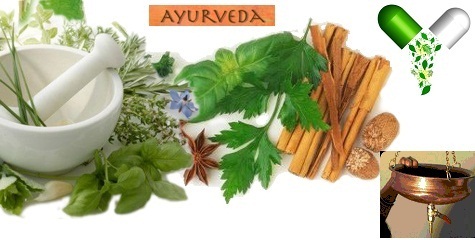Alternative Therapies
- Alternative Medicine
- Acupressure
- Acupuncture
- Ancient Magnetism
- Angel Healing
- Ayurveda
- Bach Flower Remedies
- Breathwork
- Cosmetic Acupuncture
- Crystal Healing
- Cupping Therapy
- Emotional Freedom Technique (EFT)
- Ergonomics
- Face Reading
- Fengshui
- Geopathic Stress Graphology
- Heal Your Life
- Holistic Solutions
- Holy Fire Reiki
- Homeopathy
- Hypnotherapy
- Inner Child Therapy
- Jesus Reiki
- Jikiden Reiki
- Karuna Reiki
- Lama Fera
- Lavender Flame Reiki
- Law of Attraction
- Manual Therapy
- Meditation
- Melchizedek Method
- Motivational Counseling
- Mudra Healing
- Nakshatra Energies
- Naturopathy
- Neuro Linguistic Programming (NLP)
- Panchakarma (Ayurveda)
- Panchkarma Holistic Healing - Mind Control
- Past Life Regression
- Physiotherapy
- Pranic Healing
- Pyramids
- Reiki
- Rudraksh
- Silva Mind Control Method
- Sujok therapy
- Tarot
- Unani Medicine
- Yoga
Diseases & Conditions
- Acne & Pimples
- Allergies
- Arthritis
- Asthma
- Behavioural Disorders
- Dandruff
- Diabetes
- Emotional Problems
- Gallstones
- Gastritis
- Hairloss
- Heart Diseases
- Hormonal Problems
- Hypertension
- Immune Disorders
- Infections
- Infertility
- Jaundice
- Kidney Disorders
- Liver Disorders
- Menstrual Disorders
- Migraine
- Neck & Back Pain
- Obesity
- Osteoporosis
- Peptic Ulcer
- Prevention
- Prostate Problems
- Psoriasis
- Sexual Dysfunctions
- Sinusitis
- Sleep Disorders
- Skin Diseases
- Stress
- Thyroid Disorders
- Ulcerative Colitis
- Urinary Infections
General Wellness
AYURVEDA

Ms. Seema Nambiar - Skanda Yoga Center
Ms.Seema Nambiar founder of Skanda wellbeing, and Skanda Yoga center situated in Doha Silicon Oasis, UAE, is an Educationist, Wellbeing professional and a Herbologist


Ayurveda is the ancient art of healing that deals with all aspects of a person's life as an entity. This holistic system of medicine from India uses a constitutional model for every person is an individual, unique and complete being. Its aim is to provide guidance regarding food and lifestyle so that healthy people can stay healthy and persons with health challenges can improve their health.
Ayurveda is a Science of Life as well as a medical system. Hence, the meaning of Ayurveda; two Sanskrit words: Ayu which means life and Veda which means the knowledge of. To know about life is Ayurveda and according to the ancient Ayurvedic scholar Charaka, "ayu" is comprised of four essential parts: the combination of mind, body, senses and the soul. With Ayurveda healing, the purpose is not just to bring remedy to an illness but also to bring harmony to out-out-balance factors.
In Ayurveda, when the body doshic balance of vata-pitta-kapha is agitated or in disorder, or if any of these types are accumulated, the individual may become unwell. Ayurveda philosophy views a person as a unique individual made up of five primary elements: ether (space), air, fire, water, and earth just as in nature. Should any of these elements be present in the environment, they will have an impact on us. Two examples are the weather and the food in our diet.
In addition, certain elements are seen to have an ability to combine and form various physiological functions as follows:
Ether + air = Vata dosha
Vata governs the principle of movement and therefore can be seen as the force which directs nerve impulses, circulation, respiration, and elimination.
Fire + water = Pitta dosha
Pitta is the process of transformation or metabolism, metabolism in the organ and tissue systems as well as cellular metabolism. An example is the transformation of foods into nutrients that our bodies can assimilate.
Water + earth = Kapha dosha
Kapha is responsible for growth, adding structure unit by unit and protection. Types of Kapha found in the body, for example, are cerebral-spinal fluid protecting the brain and spinal column and the mucousal lining of the stomach protecting the tissues.
Ayurveda sees each person as a special mixture because ratios of the doshas: vata, pitta and kapha vary in each individual, giving us diversity and uniqueness.
Ayurveda healing first deal with any emergency or life-threatening symptoms like high fever or asthma attacks, and then look into the problem of the fundamental causes. Remedies like herbal medication, changes in diet and nutrition, cleansing procedures like bathing, yoga postures, exercises and even breathing techniques in Ayurveda, remove symptoms and eradicate the underlying causes of a disease or health problem. If these underlying problems are not dealt with, it will manifest again either in the same way or another form.
Ayuveda disease management
Chikitsa, also known as disease management, is the Ayurveda approach to restoring health. There are eight traditional components in the complete healing program and its purpose are:
Identify health problem Eliminate underlying cause of illness Purify the body Reestablish and restore balance Strengthens and revitalizes affected organs, tissues and system to prevent recurrence
The 8 Essential Components of Ayurveda Healing are:
1. Locate person's constitution (prakruti): vata, pitta or kapha
2. Locate the present imbalance of doshas in the body (vikruti)
3. Find the reason and causes of illness such as lifestyle, diet, genetic predisposition, emotional and relationship factors, psychological stress, etc.
4. Initial treatment is to remove the cause
5. Give appropriate regimen like exercise, yoga, diet and relaxation accordingly to person's constitution, vikruti and environemnt changes, etc.
6. Detoxification treatment by either:
elimination like panchakarma or shodana, or palliation like shamana
7. Rejuvenate the body in general in order to strenthen specific ogans and tissues
8. Two types of therapies based on the principle that opposite qualities give balance:
Antagonistic therapy to the provoked dosha Antagonistic therapy to the disease
When a person becomes ill, the illness is not likely completely cured unless you change behaviours that caused it such as poor diet, inadequate exercise, bad lifestyle habits like excessive alcohol or smoking, even stress (caused by work or other factors), unresolved relationships and related psychological factors. Getting to the bottom of these factors is important in the process of healing and complete recovery.
Diagnosis:
It is necessary to identify the health problem discriminatingly and determine whether the constitutional condition of the individual. The specific treatment will not be benefit the person if diagnosis is inaccurate. So it is important to look at all symptoms physically to help you determine if it is a vata, pitta or kapha condition.
Treatment:
Once the condition is diagnosed, the treatment is given according to constitutional type. Some general treatment can benefit all types of constitutional types.
Ayurveda remedies are simple and natural, using common household herbs and strategies such as a warm bath and soothing herbal tea. Common Ayurveda herbs are also recommended in the remedies. There are several remedies for each health condition. Every person is unique and the remedies will work differently so you do not have to try all of them. Some may work better for you and not others. If it dissolves the problem, stick with it, otherwise, try the other approaches.
Always keep a fundamental therapeutic guideline when using self-treatments like Ayurveda principles and remedies. If they do not work, do not be discouraged. Sometimes it's hard to determine constitutional type and your diagnosis may not be correct. Reassess your illness and the reactions to the approach taken, and treat your actual condition. Its very rare but possible that your illness may not coincide with your own constitutional type. So be discerning to select the right remedy that fits your symptoms of your sickness, and not just body type. However, if your health condition is critical or fatal, consult your doctor immediately. Should your problem be chronic, give some time for healing and it may be months before symptoms diminish. Ayurveda is not a quick remedy so allow your body healing mechanism to process at its own pace, momentum and duration.
In Ayurveda healing, each condition comes with not only medication and herbal formulas, but also other measures like special diets, exercise, yoga, relaxation therapies like massages, tea and healing paste, among others, to provide healing. Together with medicinal treatment, changing your daily routine can help you improve health and live harmoniously in your surrounding with nature. The human body is always resilient, working to restore balance and complete health so the natural process of healing recommended in Ayurveda will support the body and bring benefits in keeping you in the pink of health and your life in harmony.



